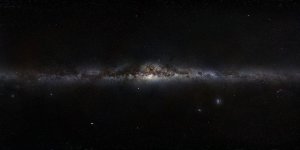| News / Space News |
NASA spacecraft observes further evidence of dry ice gullies on Mars
NASA | JULY 12, 2014
Repeated high-resolution observations made by NASA's Mars Reconnaissance Orbiter (MRO) indicate the gullies on Mars' surface are primarily formed by the seasonal freezing of carbon dioxide, not liquid water.

This pair of images covers one of the hundreds of sites on Mars where researchers have repeatedly used the HiRISE camera on NASA's Mars Reconnaissance Orbiter to study changes in gullies on slopes. Image Credit: NASA/JPL-Caltech/Univ. of Arizona
The first reports of formative gullies on Mars in 2000 generated excitement and headlines because they suggested the presence of liquid water on the Red Planet, the eroding action of which forms gullies here on Earth.
Mars has water vapor and plenty of frozen water, but the presence of liquid water on the neighboring planet, a necessity for all known life, has not been confirmed.
"As recently as five years ago, I thought the gullies on Mars indicated activity of liquid water," said lead author Colin Dundas of the U.S. Geological Survey's Astrogeology Science Center in Flagstaff, Arizona.
Dundas and collaborators used the High Resolution Imaging Science Experiment (HiRISE) camera on MRO to examine gullies at 356 sites on Mars, beginning in 2006. Thirty-eight of the sites showed active gully formation, such as new channel segments and increased deposits at the downhill end of some gullies.
Using dated before-and-after images, researchers determined the timing of this activity coincided with seasonal carbon-dioxide frost and temperatures that would not have allowed for liquid water.
Frozen carbon dioxide, commonly called dry ice, does not exist naturally on Earth, but is plentiful on Mars. It has been linked to active processes on Mars such as carbon dioxide gas geysers and lines on sand dunes plowed by blocks of dry ice.
One mechanism by which carbon-dioxide frost might drive gully flows is by gas that is sublimating from the frost providing lubrication for dry material to flow. Another may be slides due to the accumulating weight of seasonal frost buildup on steep slopes.
The findings in this latest report suggest all of the fresh-appearing gullies seen on Mars can be attributed to processes currently underway, whereas earlier hypotheses suggested they formed thousands to millions of years ago when climate conditions were possibly conducive to liquid water on Mars.
Although the findings about gullies point to processes that do not involve liquid water, possible action by liquid water on Mars has been reported in the past year in other findings from the HiRISE team. Those observations were of a smaller type of surface-flow feature.
YOU MAY ALSO LIKE



